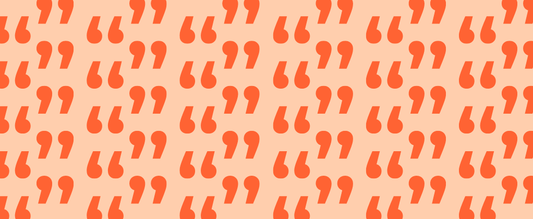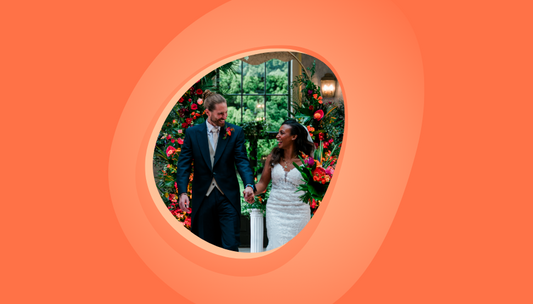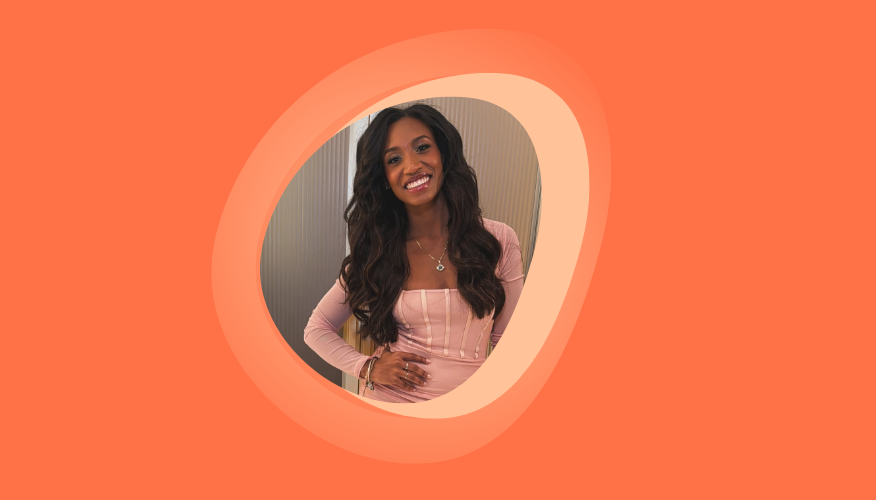Healing your inner critic
Read time 6 mins
(a not-so-linear story of sport, silk presses, survival, and self-discovery)
If you’d met me as a child, you might’ve guessed I’d grow up to be an athlete. I was that kid who lived for sports day, sprinting down the 100m track like I’d just been told the ice cream van was leaving. Every single year, I’d come first. It wasn’t about beating anyone; it was the exhilarating feeling of wind on my face, the joy of movement, and possibility.
By secondary school, my sporty streak was still strong: football, netball, athletics, you name it. But then came the tricky part of growing up: fitting in.
Blending in before standing out
At my majority white school, differences often came with a price. My crimped hair, my energy, my everything felt a little too loud. So I did what so many teenage girls do when they want to belong. I softened. Literally, I got a silk press. Straightened my hair. Tried to make myself more palatable. I became “Miss Neutral”. Not the most popular, not the least. Just quietly existing, a little grey man, as they say.
At the time, I had no idea what self-awareness was. I was just trying to survive the unspoken social rules of adolescence. Blend in, don’t rock the boat, stay likeable. Looking back, I realise how easily a sheltered childhood can make you vulnerable to the world’s noise.
Though my closest and dearest got to see me. The real me. Loud, quick-witted, expressive, full of laughter, always singing, always creating something out of nothing. I was playful, deeply feeling, a bit of a whirlwind. There was joy there. But outside of that safe space, I rarely gave people access to that version of me. I kept her tucked away in case the world found her too much.
The thirteen-year-old who talked her way into a flower shop
Fast forward to 2008. Things at home were tough. My dad, the heart and provider of our family, became unwell and couldn’t work. I was thirteen, which in my mind at the time basically meant I was ready to start a career. I didn’t see age as a barrier; it was just a detail.
So I went out and found a job.
I walked into a florist and confidently asked for weekend work. To my surprise, I got it. I didn’t have a CV, but I had determination, and I think that counted for something. That little flower shop became my first taste of the working world. Early mornings, fast hands, vocal customers, and a boss who taught me more about real-world grit than any classroom ever could.
For five years, that shop was my training ground. I learned about customer service, managing expectations, handling pressure, and the power of showing up. That job shaped my work ethic more than I knew at the time.
But I also started to build a second self. The polished one. The reliable one. The high-functioning, agreeable version of me that could blend into adult spaces without making anyone uncomfortable. The real me, the playful, expressive one, still showed up in private, but she became less visible to the world.
Playing it safe, then taking the leap
When it came time to choose my A-levels, I played it safe. I picked subjects that felt steady and manageable. But on results day, something shifted. I decided to take a risk. I applied for maths and economics at university, two subjects I actually loved.
If I’m honest, my first year of uni was mostly socialising and pretending to be figuring things out. Translation: procrastination with a side of £1 shots at the SU (students’ union). But by my final year, I found my discipline again. I cracked down, focused, and landed a post-graduation internship that opened the door to a corporate career.
Funny story, I thought I was going to be an actuary. I had the spreadsheets and the seriousness down. But God, as He/She tends to, had other plans.
When life gets real
While my career was taking shape, my personal life felt like a landslide. My dad’s illness meant I needed to step up in ways most twenty-somethings don’t have to. Dreams of travel, adventure, and freedom took a backseat while I learned to navigate responsibility, bills, and quiet resilience.
And then came marriage. My first one.
It felt, at the time, like forever. I was young and very starry-eyed and believed love alone could fix anything. But it didn’t. It unravelled, painfully, and left me staring at the pieces of myself I didn’t recognise.
They say trauma is a portal. It cracks you open to depths you didn’t know existed. For me, that was the start of my real evolution. The version of Nicole that learned that love is not enough on its own. That loving boundaries, self-awareness, and partnership matter more than fairytales. That radical responsibility for one’s healing is a verb, not a destination.
It also began a slow and steady return to my real self. Not the version that made everyone else comfortable. The one that was loud and loving and layered and deeply alive.
The social experiment that changed everything
When Love Is Blind UK came around, people assumed I went on the show for romance. But really, I went for connection. I wanted to see if vulnerability could lead to something authentic.
Saying yes to love again, after divorce, after heartbreak, after learning the hard way, was terrifying. My inner critic had a field day.
“What if you’re not ready?”
“People will judge you.”
“What if you get it wrong again?”
But this time, I didn’t let that voice win.
Meeting Benaiah was like meeting someone who saw the world at the same rhythm as me - we just experienced it in different ways. Curious, grounded, slightly chaotic, and deeply human. Saying yes to him wasn’t fearless. It was faith-filled. It was choosing hope again, even when my past told me not to.
And let's be honest, marrying someone after just under two months? Bold. Some might say brave. Others might say… questionable. At times it's been tough. Beautiful in moments, yes, but also confronting. Two people with their own histories, triggers, and ways of doing life suddenly trying to merge worlds. There have been growing pains, misunderstandings, and more than one “wait, what's with that towel on the bed?” kind of moments…
Then came a curveball I didn’t see coming. I discovered I had ADHD shortly after the show aired.
Suddenly the overwhelm I felt around mundane tasks like laundry made sense. So did the 2am “zoomies”. And it meant Benaiah and I had to learn how to be partners while I was still unpacking what it meant for me. I definitely cried over things that didn’t need tears and forgot important conversations while remembering obscure facts about mathematical modelling.
It was messy and emotional (at times) and very human. But also honest. And that honesty, as uncomfortable as it was at times, has been the foundation for something real.
On that experiment, and since, it was also the first time I let the real me be fully visible on such a public stage. No edits. No performance. Just me. And it turns out, that version of me is the one people connected with most.
The quiet work of healing
Today, healing looks less like grand gestures and more like small, consistent choices.
It looks like journalling when my thoughts are messy.
Like taking walks instead of reacting immediately.
Like forgiving myself when old patterns sneak back in.
Like acknowledging the inner critic, but not giving her the mic.
Professionally, I’ve allowed everything I’ve lived to open new pathways. I still work as a marketing director, but on my terms now. With more boundaries, more honesty, more balance. And in parallel, I teach maths. Yes, maths! Full circle. The subject I once loved for its logic and predictability now brings me peace and joy in a completely different way.
More importantly, I don’t feel like I have to split myself in two anymore. I don’t hide the creative, expressive, intuitive parts of me in order to be taken seriously. I bring my whole self now, even when it feels risky.
What I’ve learned about the inner critic
Here’s what I know now. Your inner critic is not your enemy. She’s just scared. She’s trying to protect you from shame, failure, rejection. But sometimes protection looks like perfectionism, self-doubt, or people-pleasing.
Healing her doesn’t mean silencing her. It means listening, with compassion, and saying, “I know you’re scared, but I’m safe now. We’re okay.”
It means letting your younger self, the one who straightened her hair to fit in, who took a job at thirteen, who feared getting it wrong, know that she did her best. And that it was enough.
It means letting your true self take up space, even if it’s uncomfortable at first. Especially then.
Where I am now
I’m still learning. Still healing. Still getting it wrong sometimes. But I’m also deeply grateful. For my family. For my journey. For the resilience that sport, heartbreak, love, and late nights have built in me.
And for the voice inside that once tore me down, now slowly learning to cheer me on.
Because healing your inner critic isn’t about becoming perfect.
It’s about remembering who you were before you thought you had to be anything else.
And having the courage to return to her.
About the author
This article was authored by get dopa ambassador and star of Netflix’s ‘Love is Blind UK’ - Nicole Grünewald-Bridi. You can read her heartfelt (and brutally honest!) articles on travel and coping with fear here.

Christmas, alone (in my head… and kind of loving it)
Read time 4 mins

From Struggle to Support: The Journey That Inspired get dopa
Read time 5 mins

Feeling the fear and doing it anyway
Read time 4 mins








